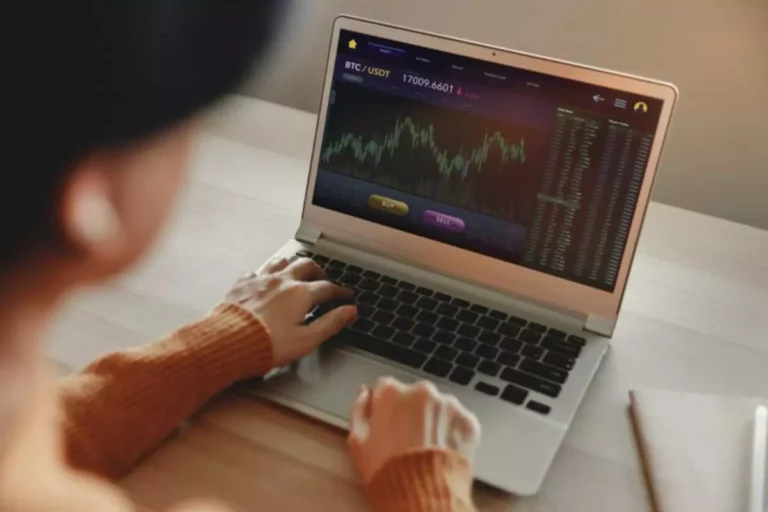Content
With more than twenty years of experience, iShares continues to drive progress for the financial industry. IShares funds are powered by the expert portfolio and risk management of BlackRock. Stock ETFs, also known as equity ETFs, invest in a basket of individual stocks. In addition, there Cryptocurrency wallet are equity ETFs that focus on size or a particular investing style, such as value or momentum. A big reason for the tax efficiency of ETFs is the vast majority are index funds, which typically trade less frequently than actively managed funds.

How comfortable are you with investing?
- The opinions expressed are the author’s alone and have not been provided, approved, or otherwise endorsed by our partners.
- ETFs are extremely transparent, with all of the asset holdings publicly listed each day, making it simple to understand exactly what is held by the fund.
- While ETFs and stocks both trade throughout the day, there are some key differences between the two types of securities.
- In 2024, the US Securities and Exchange Commission (SEC) approved Bitcoin ETFs and ETPs and approved the sale of spot ETFs in the United States.
- NerdWallet, Inc. is an independent publisher and comparison service, not an investment advisor.
ETF categories can overlap, and an ETF can be categorized in more than once. For instance, if an ETF represents a stock index, the ETF can be classified as either a stock ETF or an index ETF. Similarly, an industry-specific ETF could also be a stock ETF for companies within that etp vs etf industry. You can find out more about ETFs that hold stocks with a strong history of paying dividends to their shareholders here. So-called ‘physical’ ETFs hold the assets linked to the index in question and, as with index trackers, either replicate the index in full or rely on a technique called ‘sampling’. Miranda Marquit has been covering personal finance, investing and business topics for almost 15 years.

What Is an ETF? How Do They Work?
When investing in some types of ETFs, like commodity ETFs, https://www.xcritical.com/ it’s important to be aware of a situation called contango. The underlying assets held by commodity ETFs are futures contracts, and in certain cases the expiring near-term contracts are less expensive than the front-month contracts. As the futures held by the fund roll over, there can be moments when the ETF sees steep, sudden losses.
You’re our first priority.Every time.
This site does not include all companies or products available within the market. ETFs are popular because they offer investors a lot of valuable traits. While ETFs and stocks both trade throughout the day, there are some key differences between the two types of securities.
These invest either directly in physical commodities, such as gold, silver, or oil, or in commodity futures contracts. They offer exposure to commodity markets without the need for direct investment in the underlying assets. An index ETF is constructed in much the same way and will hold the stocks of an index. However, the difference between an index fund and an ETF is that an ETF tends to be more cost-effective and liquid than an index mutual fund. You can also buy an ETF throughout the trading day, while a mutual fund trades via a broker after the close of each trading day.
When an AP sells stocks to the ETF sponsor in return for shares in the ETF, the block of shares used in the transaction is called a creation unit. If an ETF closes with a share price of $101 and the value of the stocks that the ETF owns is only worth $100 on a per-share basis, then the fund’s price of $101 was traded at a premium to the fund’s net asset value (NAV). The NAV is an accounting mechanism that determines the overall value of the assets or stocks in an ETF.
Industry ETFs are also used to rotate in and out of sectors during economic cycles. Our community is about connecting people through open and thoughtful conversations. We want our readers to share their views and exchange ideas and facts in a safe space. Now, we will introduce you to the five most common ETF investing strategies. However, it is important to experiment and find one that perfectly suits your needs and investing style. Most ETFs tend to reveal their entire portfolio make-up to the public, making it quick and easy to see how money is being allocated.
In the case of a mutual fund, each time an investor sells their shares, they sell it back to the fund and incur a tax liability that must be paid by the shareholders of the fund. An alternative to standard brokers is a robo-advisor like Betterment and Wealthfront.An ETF’s expense ratio is the cost to operate and manage the fund. Various types of ETFs are available to investors for income generation, speculation, or hedging risk in an investor’s portfolio. The first ETF in the U.S. was the SPDR S&P 500 ETF (SPY), which tracks the S&P 500 Index. Today, ETFs are among the most popular investments for institutional and individual investors, usually accounting for between 26% to 30% of the daily trading volume in the U.S. in recent years. An investor may opt to invest in a single sector exclusively or multiple sectors.
Financial institutions must develop robust cybersecurity frameworks specifically designed for tokenized assets. These frameworks need to address not only traditional security concerns but also blockchain-specific vulnerabilities. Regular security audits and updates will be crucial to maintaining system integrity. The transition toward tokenized ETFs presents complex technical challenges that require careful consideration and innovative solutions. The industry must develop robust systems that can reliably track ownership and maintain secure custody of assets across both traditional and digital platforms.
An index ETF only buys and sells stocks when its benchmark index does (aside from rebalancing or tax-loss harvesting). Big investment moves—like when a company is removed from the index completely—happen very rarely. An ETF (exchange-traded fund) is an investment that’s built like a mutual fund—investing in potentially hundreds, sometimes thousands, of individual securities—but trades on an exchange throughout the day like a stock. ETFs are commonly included in retirement portfolios because of their diversification benefits and low cost. They can be used to construct a balanced portfolio aligned with your risk tolerance and retirement timeline while offering exposure to a wide range of asset classes, such as stocks, bonds, and commodities.
Because ETFs are traded on stock exchanges, they are easily bought or sold. You’ve probably learned that keeping fees low is a big driver of successful investing. And while that’s important, taxes may be more detrimental to long-term returns than fund management fees.
The risk is that an investor relying on just a concentrated handful of shares from which to make their fortune might see a single corporate failure have a disproportionate impact on their portfolio’s overall performance. Bankrate.com is an independent, advertising-supported publisher and comparison service. We are compensated in exchange for placement of sponsored products and services, or by you clicking on certain links posted on our site. Therefore, this compensation may impact how, where and in what order products appear within listing categories, except where prohibited by law for our mortgage, home equity and other home lending products.
As alluded to in the title of this strategy, the core and satellite technique involves investing in more than one ETF fund. There are several ways to approach exchange-traded funds to make them work for you. There is no single strategy that fits all investors, and neither is there that will satisfy a single investor’s investment style. BLOK consists of 55 value stocks, while BLCN holds stocks of 74 companies, including such companies as Galaxy Digital Holdings and Overstock. The BLOK ETF’s provider has over $1 billion in assets under management (AUM) invested in the ETF, while BLCN’s has about $280 million of AUM. They represent a wide array of stocks, and these kinds of funds can be created to represent any form of equity shares trading on any exchange.

